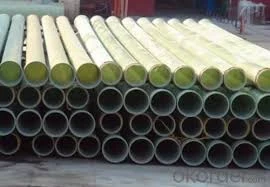
-
 Afrikaans
Afrikaans -
 Albanian
Albanian -
 Amharic
Amharic -
 Arabic
Arabic -
 Armenian
Armenian -
 Azerbaijani
Azerbaijani -
 Basque
Basque -
 Belarusian
Belarusian -
 Bengali
Bengali -
 Bosnian
Bosnian -
 Bulgarian
Bulgarian -
 Catalan
Catalan -
 Cebuano
Cebuano -
 China
China -
 China (Taiwan)
China (Taiwan) -
 Corsican
Corsican -
 Croatian
Croatian -
 Czech
Czech -
 Danish
Danish -
 Dutch
Dutch -
 English
English -
 Esperanto
Esperanto -
 Estonian
Estonian -
 Finnish
Finnish -
 French
French -
 Frisian
Frisian -
 Galician
Galician -
 Georgian
Georgian -
 German
German -
 Greek
Greek -
 Gujarati
Gujarati -
 Haitian Creole
Haitian Creole -
 hausa
hausa -
 hawaiian
hawaiian -
 Hebrew
Hebrew -
 Hindi
Hindi -
 Miao
Miao -
 Hungarian
Hungarian -
 Icelandic
Icelandic -
 igbo
igbo -
 Indonesian
Indonesian -
 irish
irish -
 Italian
Italian -
 Japanese
Japanese -
 Javanese
Javanese -
 Kannada
Kannada -
 kazakh
kazakh -
 Khmer
Khmer -
 Rwandese
Rwandese -
 Korean
Korean -
 Kurdish
Kurdish -
 Kyrgyz
Kyrgyz -
 Lao
Lao -
 Latin
Latin -
 Latvian
Latvian -
 Lithuanian
Lithuanian -
 Luxembourgish
Luxembourgish -
 Macedonian
Macedonian -
 Malgashi
Malgashi -
 Malay
Malay -
 Malayalam
Malayalam -
 Maltese
Maltese -
 Maori
Maori -
 Marathi
Marathi -
 Mongolian
Mongolian -
 Myanmar
Myanmar -
 Nepali
Nepali -
 Norwegian
Norwegian -
 Norwegian
Norwegian -
 Occitan
Occitan -
 Pashto
Pashto -
 Persian
Persian -
 Polish
Polish -
 Portuguese
Portuguese -
 Punjabi
Punjabi -
 Romanian
Romanian -
 Russian
Russian -
 Samoan
Samoan -
 Scottish Gaelic
Scottish Gaelic -
 Serbian
Serbian -
 Sesotho
Sesotho -
 Shona
Shona -
 Sindhi
Sindhi -
 Sinhala
Sinhala -
 Slovak
Slovak -
 Slovenian
Slovenian -
 Somali
Somali -
 Spanish
Spanish -
 Sundanese
Sundanese -
 Swahili
Swahili -
 Swedish
Swedish -
 Tagalog
Tagalog -
 Tajik
Tajik -
 Tamil
Tamil -
 Tatar
Tatar -
 Telugu
Telugu -
 Thai
Thai -
 Turkish
Turkish -
 Turkmen
Turkmen -
 Ukrainian
Ukrainian -
 Urdu
Urdu -
 Uighur
Uighur -
 Uzbek
Uzbek -
 Vietnamese
Vietnamese -
 Welsh
Welsh -
 Bantu
Bantu -
 Yiddish
Yiddish -
 Yoruba
Yoruba -
 Zulu
Zulu
Jan . 24, 2025 05:35
Back to list
Ship Pipings and Fittings
The construction and industrial sectors continuously seek materials that offer a blend of durability, resistance, and cost-effectiveness. One prime focus area is piping systems, where material choice is crucial for longevity and performance. Combining CPVC (Chlorinated Polyvinyl Chloride) and FRP (Fiberglass Reinforced Plastic) pipes represents a strategic move toward achieving enhanced durability and resistance.
Expert insights suggest that selecting the right pipe material is integral to project success. Engineers and architects prioritize materials that not only meet the required specifications but also offer long-term reliability with minimal environmental impact. This demand presses the importance of CPVC and FRP in applications where both mechanical resilience and chemical inertness are essential. Authoritative voices in the materials science domain advocate for the continuous development of hybrid materials like CPVC and FRP. Recent advancements have led to enhanced manufacturing techniques, which improve bonding between layers, thereby increasing the overall performance efficiency of the pipes. Additionally, lifecycle assessments underline the reduced environmental footprint of hybrid pipes due to their longevity and reduced replacement frequency. Consumers and industry professionals must trust the integrity and performance of their chosen materials. This trust is built on thorough testing and certification by recognized bodies ensuring that CPVC and FRP pipes meet international standards. This certification process includes rigorous tests for pressure thresholds, temperature variations, and chemical exposure. Durability and resistance are not merely technical specifications but are tied deeply to the financial viability and sustainability of infrastructure projects. By leveraging the combined strengths of CPVC and FRP, stakeholders are better positioned to uphold these principles, paving the way for future advancements in the field of piping systems. In conclusion, the amalgamation of CPVC and FRP in pipe construction is more than a technical innovation; it's a step towards sustainable and efficient resource management. This hybrid approach offers a promising horizon for various industries looking to enhance their operational capabilities while adhering to stringent environmental standards. As we continue to push the boundaries of material science, the collaboration between durability, resistance, and strategic material synthesis remains at the forefront of pioneering industrial solutions.


Expert insights suggest that selecting the right pipe material is integral to project success. Engineers and architects prioritize materials that not only meet the required specifications but also offer long-term reliability with minimal environmental impact. This demand presses the importance of CPVC and FRP in applications where both mechanical resilience and chemical inertness are essential. Authoritative voices in the materials science domain advocate for the continuous development of hybrid materials like CPVC and FRP. Recent advancements have led to enhanced manufacturing techniques, which improve bonding between layers, thereby increasing the overall performance efficiency of the pipes. Additionally, lifecycle assessments underline the reduced environmental footprint of hybrid pipes due to their longevity and reduced replacement frequency. Consumers and industry professionals must trust the integrity and performance of their chosen materials. This trust is built on thorough testing and certification by recognized bodies ensuring that CPVC and FRP pipes meet international standards. This certification process includes rigorous tests for pressure thresholds, temperature variations, and chemical exposure. Durability and resistance are not merely technical specifications but are tied deeply to the financial viability and sustainability of infrastructure projects. By leveraging the combined strengths of CPVC and FRP, stakeholders are better positioned to uphold these principles, paving the way for future advancements in the field of piping systems. In conclusion, the amalgamation of CPVC and FRP in pipe construction is more than a technical innovation; it's a step towards sustainable and efficient resource management. This hybrid approach offers a promising horizon for various industries looking to enhance their operational capabilities while adhering to stringent environmental standards. As we continue to push the boundaries of material science, the collaboration between durability, resistance, and strategic material synthesis remains at the forefront of pioneering industrial solutions.
Next:
Related Products









